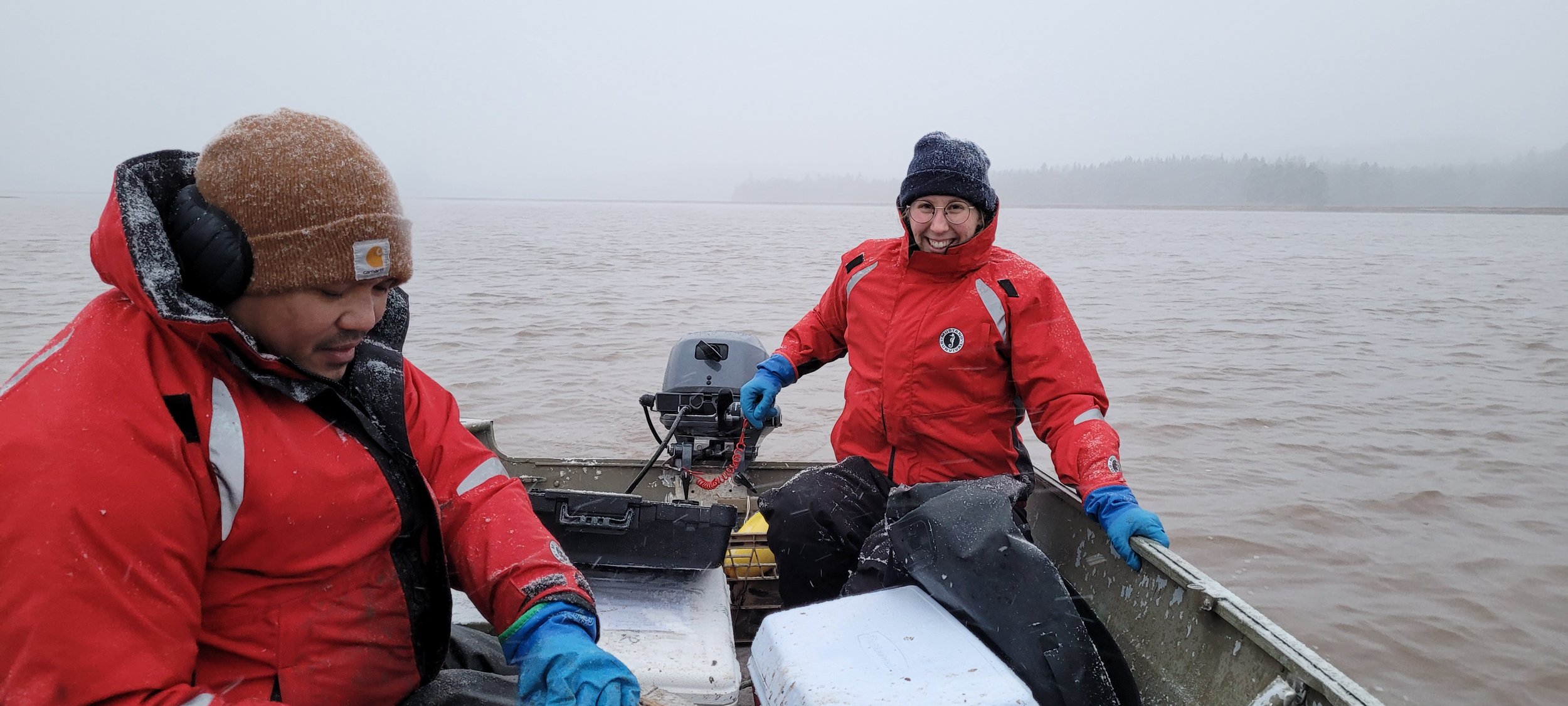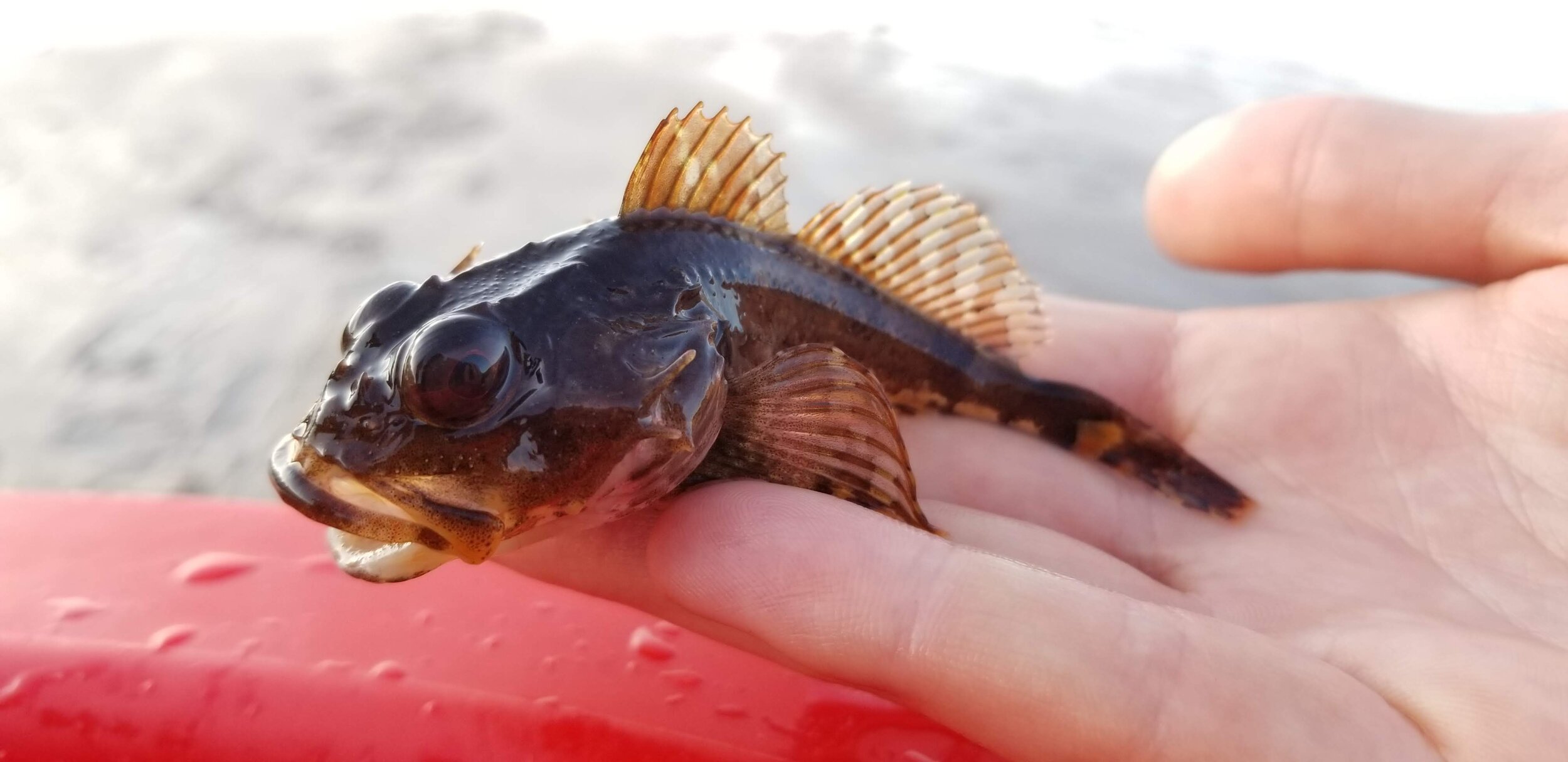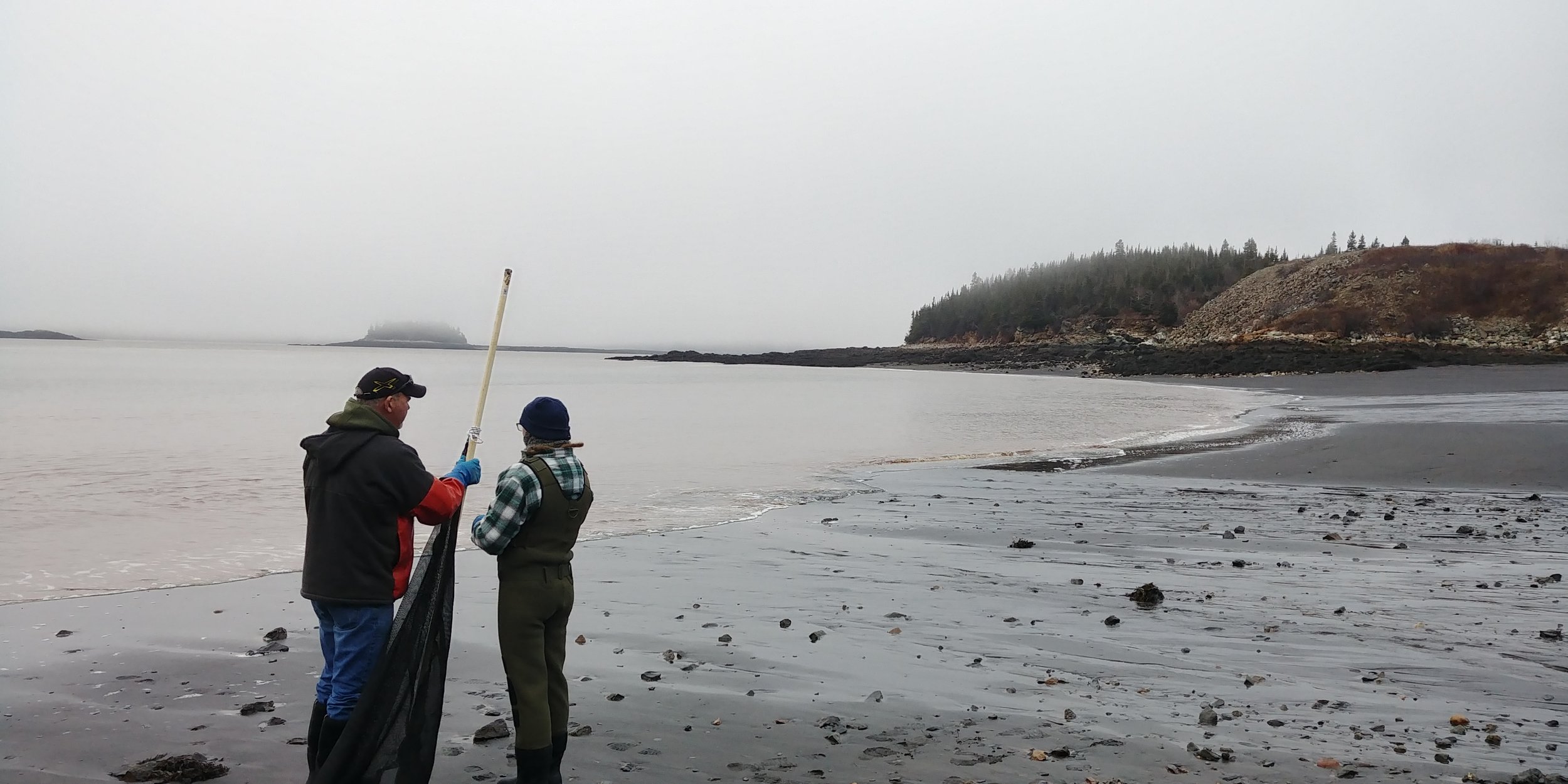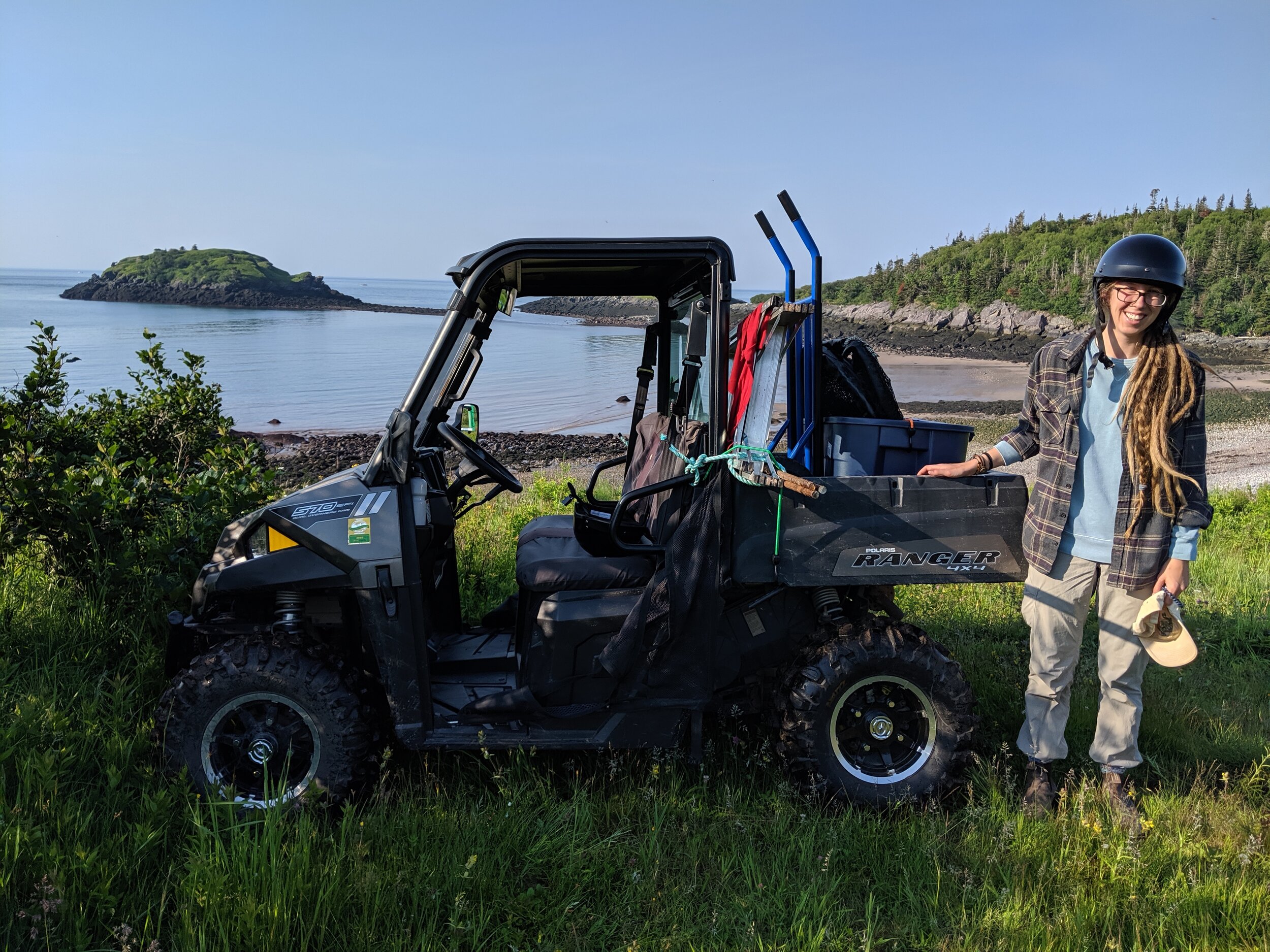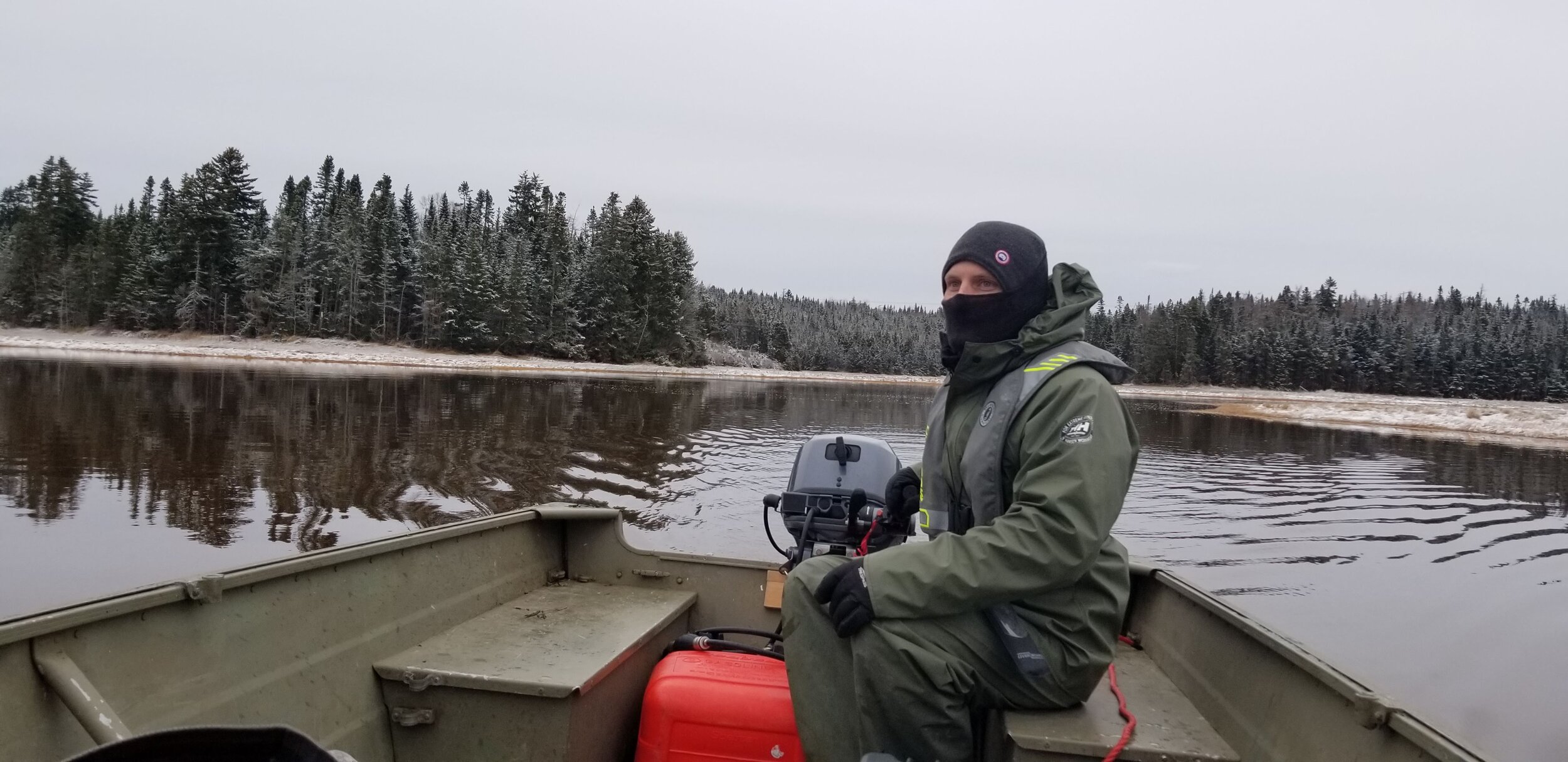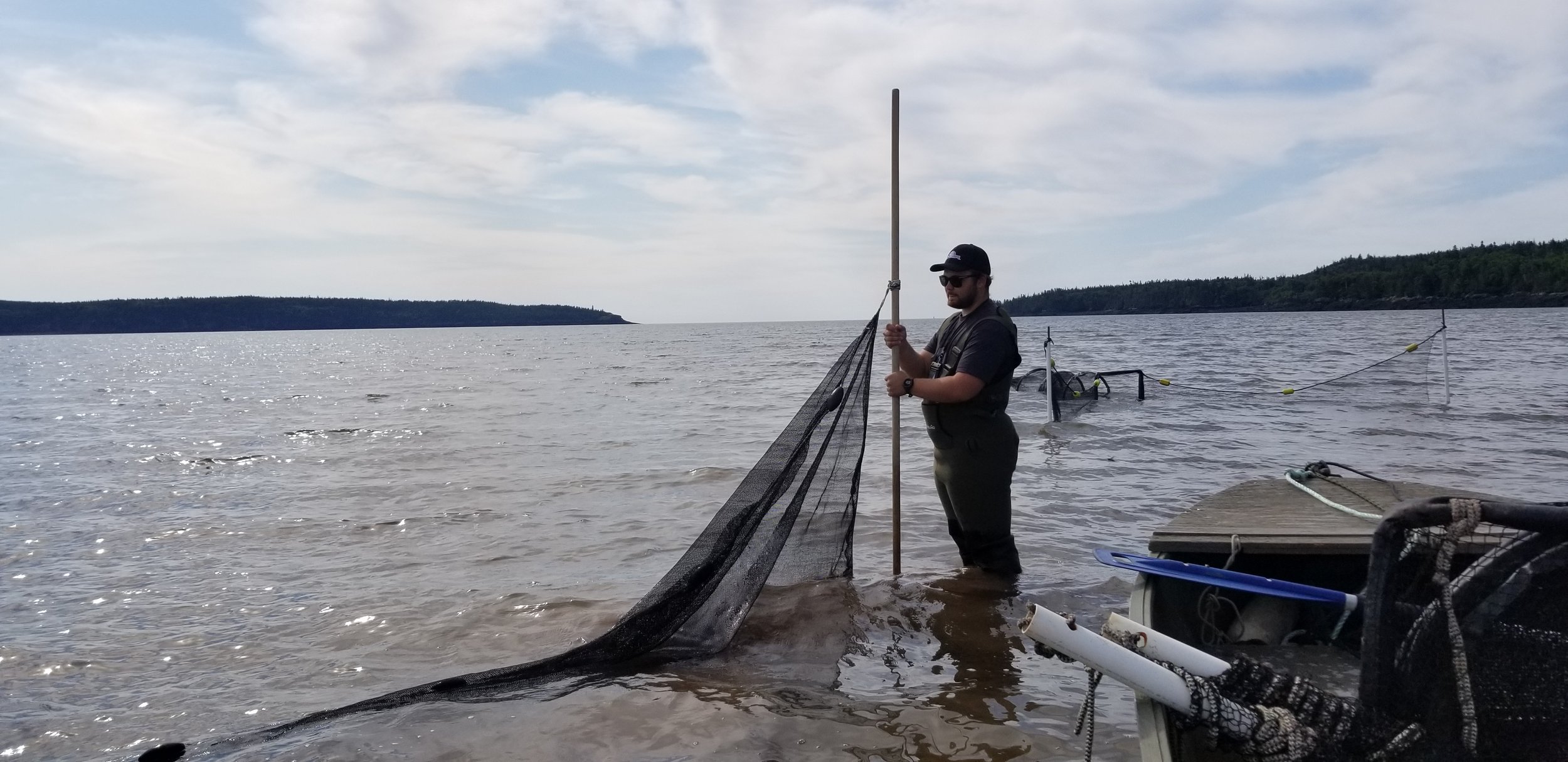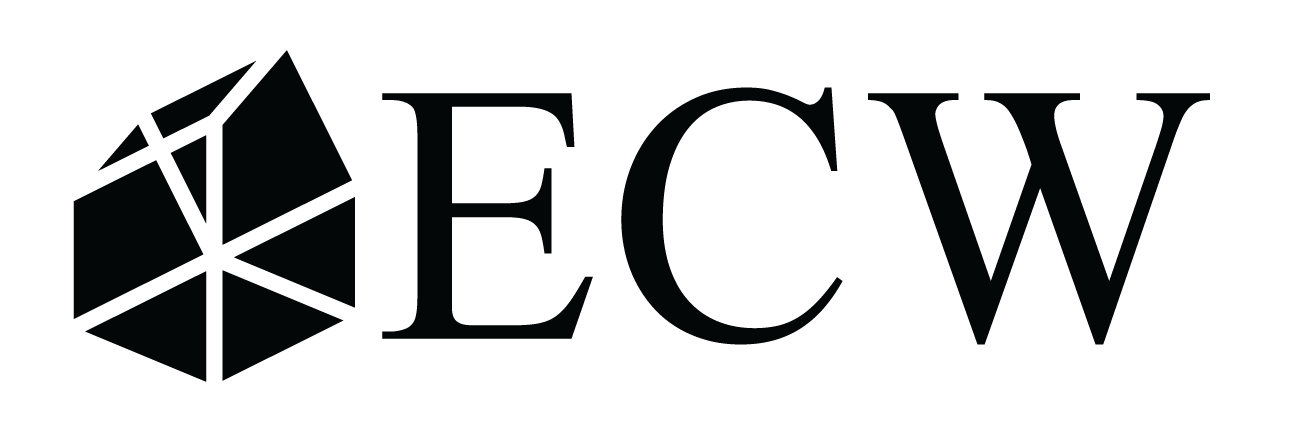Working in the Musquash Estuary Marine Protected Area
Musquash Estuary Marine Protected Area
The Musquash Estuary is considered to be the largest ecologically-intact estuary in the Bay of Fundy. Through a great amount of community support, it was designated as a Marine Protected Area (MPA) in 2006. ECW Inc. is heavily involved in monitoring the health of the MPA through a biodiversity assessment program, and a water quality monitoring program.
Biodiversity Assessment
To better understand the Musquash Marine Protected Area (MPA), ECW is working to establish a baseline dataset of fish and macroinvertebrates which live in the intertidal and near subtidal environment. Since 2019 we’ve been fishing monthly and recording what species of fish and invertebrates are present at nine sites within the MPA. In the early years of this project, two reference sites were also included in the study: Irving Nature Park and Little Chance Harbour. In 2024, we added several more sites outside the protected area to extend our understanding of fish communities in this region. New sites include: Lepreau, Pocologan, Beaver Harbour, and Green’s Point. Further, ACAP Saint John and the Passamaquoddy Recognition Group have sites in the Saint John region and the Passamaquoddy Bay region, respectively. We’re well on our way to establishing a solid baseline for the New Brunswick coast of the outer Bay of Fundy!
A fyke net is used to corral fish into a collection area that they can’t escape from. The net is set up at low tide, stays in the water for 24 hours, and is retrieved at low tide the following day. All the fish and invertebrates are placed in a bucket to be counted, measured, and weighed, and then they are released back into the ocean.
Installing a fyke net at Gooseberry Cove in the Musquash MPA
Recording the catch at the reference site in little Chance Harbour
In this figure from the 2019 data, we can see that the number of different species isn’t all that different inside the MPA compared with outside the MPA. However, we can start to see a trend where more individuals are found inside the MPA, which is very encouraging. It should be noted that while the sites outside of the MPA were selected based on being similar in habitat to the sites inside the protected area, it is difficult to match the habitat exactly and so it is expected that fish communities found there may vary.
Cleaning out a net filled with debris in the upper Musquash Estuary Marine Protected Area
Environmental Monitoring
Using a YSI to measure temperature, pH, dissolved oxygen, and conductivity in the Musquash Estuary MPA
To broaden our understanding of the health of the environment in the marine protected area, ECW also monitors water quality on a seasonal basis and takes sediment hydrocarbon samples bi-annually. These metrics provide a working baseline from which to compare future environmental changes, and helps give context to the other work being conducted in the estuary.
Invasive Plant Survey: Musquash
Through the generous support of Port Saint John and DP World, we are currently carrying out a full survey of invasive plants in the conserved lands surrounding the Musquash Estuary Marine Protected Area. Recently, researchers found two patches of an aggressive invasive grass in this area, a region that multiple organizations are working together to maintain as a natural space. This leads us to more questions: How did it get there? Are there more patches that we’re not aware of? What other invasive species might be invading this natural space? We have designed plant surveys in key areas to begin to find answers to these questions. Stay tuned for the results!
Porpoise Noise Study
To understand the presence and habitat use of porpoises in the Musquash Estuary MPA, we carried out a short pilot project in October of 2023. We used a hydrophone (underwater microphone) to record their echolocation clicks, and listened to the space between clicks (inter-click-interval) to understand what the clicks were being used for. See the results below.
Interested in our underwater noise program? Click here to learn more.
We would like to thank the Department of Fisheries and Oceans, Port Saint John, and DP World for funding and continuous support throughout these projects.
